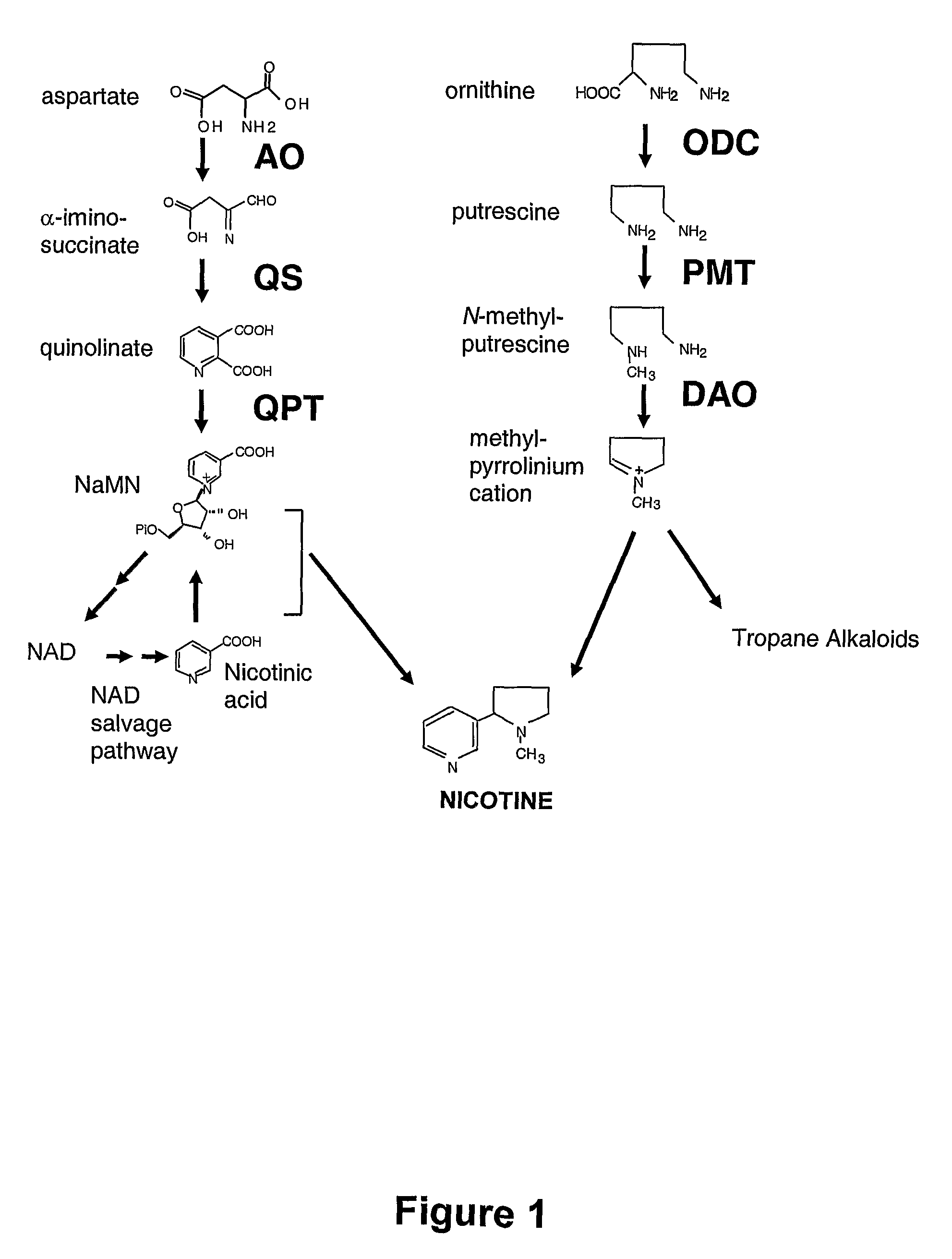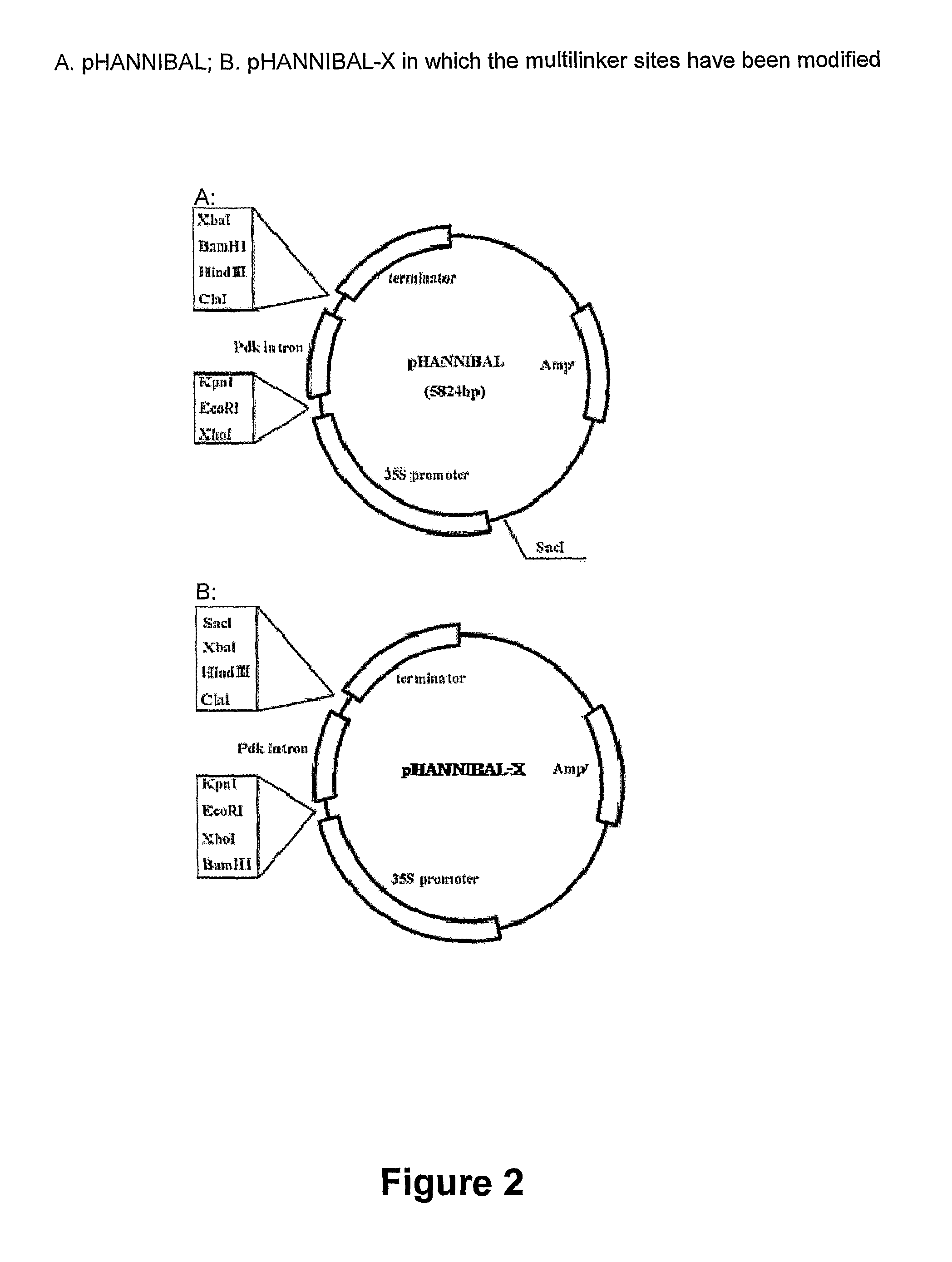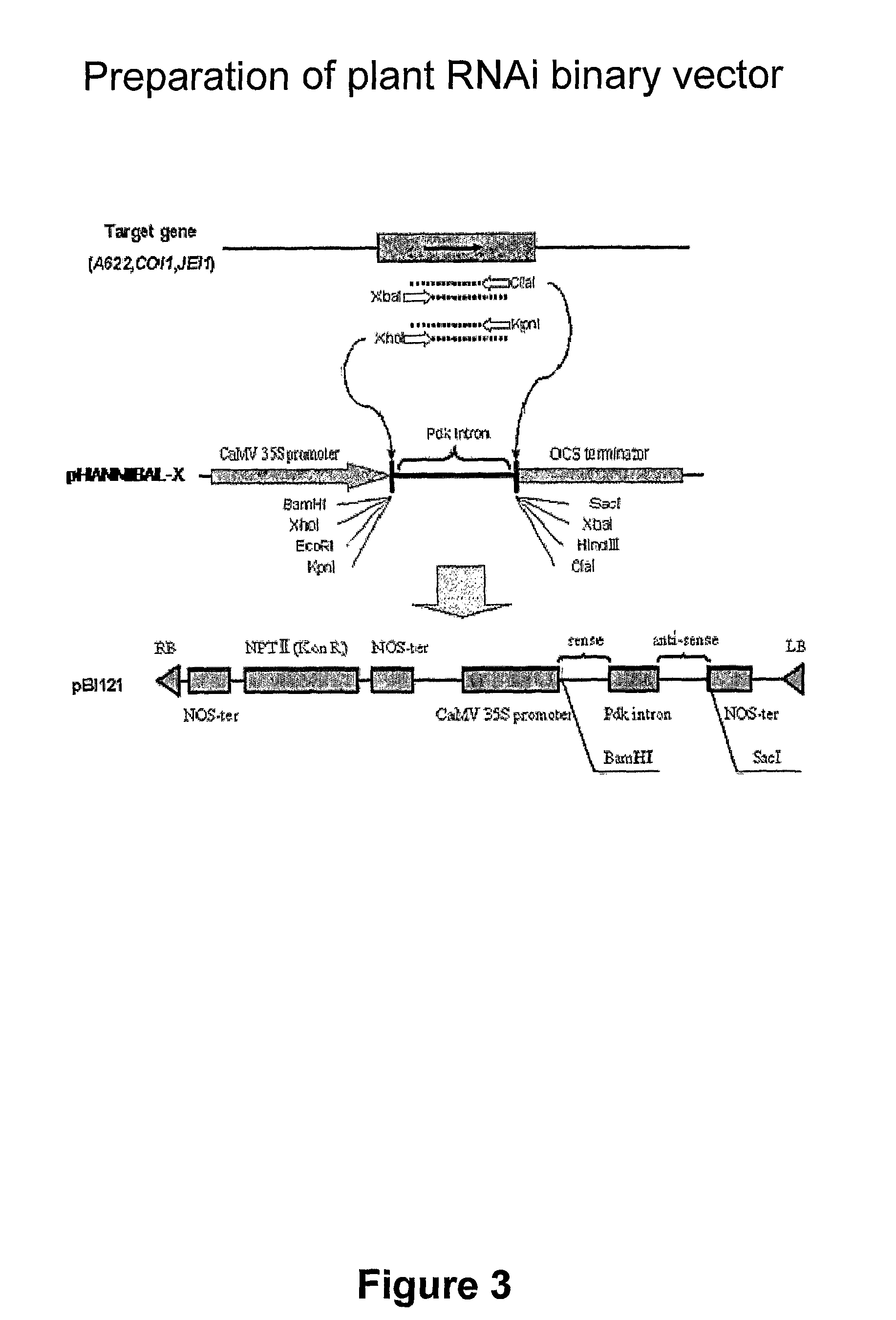Reducing levels of nicotinic alkaloids in plants
a technology of nicotinic alkaloids and plants, applied in the field of molecular biology and the downregulation of alkaloid synthesis, can solve the problems of people handling tobacco who may suffer from overexposure to nicotine, and the effectiveness of nicotine replacement therapy (nrt) as a smoking cessation treatment is not very good, so as to reduce the level of nicotinic alkaloids in plants and reduce the nicotine in tobacco plants
- Summary
- Abstract
- Description
- Claims
- Application Information
AI Technical Summary
Benefits of technology
Problems solved by technology
Method used
Image
Examples
example 1
Preparation of pRNA1-A622 Vector for Reducing Alkaloid Content by Down-Regulating A622 Expression
[0154]The plasmid pHANNIBAL, see Wesley et cd., Plant J. 27: 581-590 (2001), was modified to produce plasmid pHANNIBAL-X as shown in FIG. 2. A SacI restriction site between the ampicillin resistance gene (Amp) and 35S promoter was eliminated by SacI cutting and subsequent DNA blunting and ligation. The multi-cloning sites (MCS) were modified as follows. A Bam H I restriction site was added to the MCS between the promoter and Pdk intron by inserting an adaptor (5′ TCGAACGGGATCCCGCCGCTCGAGCGG) (SEQ ID NO: 5) between the XhoI and EcoRI sites. A Bam H1 site was eliminated from and a Sac I site was inserted into the MCS between the intron and terminator by inserting an adaptor (5′ GATCAGCTCTAGAGCCGAGCTCGC) (SEQ ID NO: 6) between the BamHI and XbaI sites.
[0155]A plant RNAi binary vector was prepared using pHANNIBAL-X using the scheme diagramed in FIG. 3, in which distinct “sense” and “antisens...
example 2
Suppression of A622 in Tobacco BY-2 Cells
[0162]While tobacco BY-2 cell cultures do not normally synthesize nicotinic alkaloids, methyl jasmonate treatment induces expression of genes for known enzymes in the nicotine biosynthesis pathway and elicits formation of nicotinic alkaloids.
[0163]In order to deduce the function of A622, RNAi strain cultured cells were prepared in which mRNA from pRNA1-A622 was expressed in cultured tobacco BY-2 cells to suppress A622.
Agrotransformation
[0164]The vector (pRNA1-A622) was transformed into Agrobacterium tumefaciens strain EH105, which was used to transform tobacco BY-2 cells. The methods for infecting and selecting the tobacco BY-2 cells were as follows.
[0165]Four ml of BY-2 cells which had been cultured for 7 days in 100 ml of modified LS medium, see Imanishi et al., Plant Mol. Biol., 38: 1101-1111 (1998), were subcultured into 100 ml modified LS medium, and cultured for 4 days.
[0166]One hundred microliters of A. tumefaciens solution, which had ...
example 3
Construction of an Inducible A622 RNAi Vector
[0182]Constitutive suppression of, A622 expression in tobacco hairy roots significantly inhibited root growth, precluding analysis of nicotinic alkaloids. To circumvent this, an estradiol-inducible gene expression system (XVE system) was developed. The XVE system produces RNAi hairpin molecules and target genes are suppressed only after addition of an inducer (beta-estradiol) into the culture medium.
[0183]The RNAi region containing A622 sense and antisense DNA fragments was excised from the pHANNIBAL-X plasmid with Xho I and Xba I, and ligated into pBluescript KS which had been digested with Xho I and Xba I. The RNAi region was then excised with Xho I and Spe I, and was subcloned between the XhoI and SpeI sites in the MCS of the XVE vector pER8 (Zuo J. et al, Plant J, 24: 265-273 (2000)) to produce the binary vector pXVE-A622RNAi.
[0184]The T-DNA region of pXVE-A622RNAi (See FIG. 7) contains a cassette for estradiol-inducible expression of...
PUM
 Login to View More
Login to View More Abstract
Description
Claims
Application Information
 Login to View More
Login to View More - R&D
- Intellectual Property
- Life Sciences
- Materials
- Tech Scout
- Unparalleled Data Quality
- Higher Quality Content
- 60% Fewer Hallucinations
Browse by: Latest US Patents, China's latest patents, Technical Efficacy Thesaurus, Application Domain, Technology Topic, Popular Technical Reports.
© 2025 PatSnap. All rights reserved.Legal|Privacy policy|Modern Slavery Act Transparency Statement|Sitemap|About US| Contact US: help@patsnap.com



